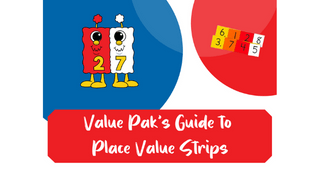Welcome back to the 2021-2022 school year!
I bet most could contribute a story or two (or maybe a whole chapter!) to the book of craziest teaching experiences from the past year! We can certainly look back on the last year and say it was a year like no other. We might even be able to say we’re better for it – better at Google Classroom, better at recording ourselves with different devices, and definitely better at Zoom!
We know we might not be completely out of the woods of the pandemic yet, and many of our schools have different virtual options still in place, but we are eagerly excited about starting this school year with students IN our classrooms doing as much hands-on learning as possible!
 At SIS4Teachers, we’ve had a busy summer preparing for lots of things that you’ll find out about soon, but we are also back in full force doing professional development in-person! I must say, it’s completely refreshing to be able to actually see the beautiful faces of the teachers that we’re working with, and to be able to feed off their energy and excitement.
At SIS4Teachers, we’ve had a busy summer preparing for lots of things that you’ll find out about soon, but we are also back in full force doing professional development in-person! I must say, it’s completely refreshing to be able to actually see the beautiful faces of the teachers that we’re working with, and to be able to feed off their energy and excitement.
The excitement is not without trepidation, however. As we go back into our classrooms, we’re certainly going to experience the learning loss that comes as a side effect of students not having in-person instruction for a year. We may decide to have a 30 day soft start to our grade levels, but I’m confident that students’ skills will increase as we start to use the appropriate instructional levels to get them caught up.
While some you might have started already, many of the teachers we work with are just starting to think about getting back to actual classroom routines. We’re doing a lot of trainings for new teachers and refreshers for teachers who feel like they’re brand new again after last year, so let’s kick off by talking about Shannon’s Top 5 Tips for getting our math classrooms set up for successful in-person, hands-on learning.

1. Routines (Math Workshop Stations)
This is a foundational piece to setting up your classroom for success. Typically, this involves some variation on the math workshop structure, which provides a flexible, but organized way for students to have guided instruction (Math with a Teacher), play application games (Math with Someone), have access to technology when needed (Math with Technology), and even have independent practice (Math by Myself). These are the key elements to a math workshop. Check out our series on each element of the math workshop!
We have a great set of templates to help you structure your math workshop – there is even a guided group template to help you keep track of what each group is doing so you don’t have to waste time trying to remember!
Additionally, we want to leave time for number talks and application problems. These are two great additions to your math workshop and provide opportunities for students to interact with math in an important way, but you don’t have to do both every day. I usually tell teachers to alternate. Monday, Wednesday, Friday this week, set aside 7-10 minutes for a number/numeracy talk. Tuesday and Thursday, go through a problem in your visual model journal. Then, next week, swap so you’ll get three visual model problems and two number talks.
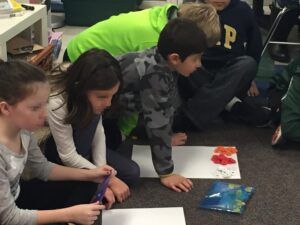 Before we slip right back into that workshop model we’ve always done though, this year, we also have to consider social distance and other COVID protocols. While we might have to modify, the key is to figure out how we can differentiate instruction in small groups. Maybe you start your lesson with your whole class, and then make sure you have a hands-on experience prepared so that students are able to experience the concept. Of course, the application games students play with manipulatives will also hit some of those standards home.
Before we slip right back into that workshop model we’ve always done though, this year, we also have to consider social distance and other COVID protocols. While we might have to modify, the key is to figure out how we can differentiate instruction in small groups. Maybe you start your lesson with your whole class, and then make sure you have a hands-on experience prepared so that students are able to experience the concept. Of course, the application games students play with manipulatives will also hit some of those standards home.
Remember, every math workshop is unique! While you think about structure for your classroom, consider your logistical concerns, your school district, even your unique teaching style to plan how you will incorporate the important elements of a math workshop.
2. Number/Numeracy Talks
This was a hard piece to accomplish in our various virtual settings last year! Maybe your district had to record videos and just hope kids would watch (translation: no feedback for you). Maybe you actually tried to do some numeracy talks, but just had to hope that kids had their counters and 10-frames you sent home. Number/numeracy talks are a very important part of helping kids process math concepts and strategies, so as we head back into the classroom, they deserve careful planning and consideration!
Where do you start?
For Kindergarten, start on the red level of our numeracy talks. Check out the free video and preview of that level here!
For 1st grade, the yellow level of our numeracy talks is a great starting point. This level does conservation to 10 with the 10-frame, the linear Counting Buddy Jr, and even the scatter.
For 2nd grade, we recommend a soft start in a review of numeracy using the green level. This level looks at conservation to 20 with a double 10-frame, the Counting Buddy Sr. and a rekenrek.

For 3rd-5th grade, I would use your number talks to do a review of addition strategies. Remember our Math Might friends can always help with this part! D.C. can help students decompose with addition, students might use compensation with Abracus, or maybe solve with partial sums and our friend Value Pak.
 And it’s okay to start small! Start off with a number talk looking at 9 + 6, and see if your students know any of the strategies. Once they’re confident in applying strategies to a single-digit plus a single-digit problem, move up to a two-digit plus a single-digit problem, and then maybe try out some two-digit plus two-digit.
And it’s okay to start small! Start off with a number talk looking at 9 + 6, and see if your students know any of the strategies. Once they’re confident in applying strategies to a single-digit plus a single-digit problem, move up to a two-digit plus a single-digit problem, and then maybe try out some two-digit plus two-digit.
Remember number talks should happen 7-10 minutes a day, 3-5 times a week. If we don’t get it at least three times a week, it probably won’t have the effect that we’re looking for.
 Questioning is key during a number talk, so make sure you have those inquiry-based questions ready to go. Not sure what to say? The first eight shows in each grade level of the Math Mights Show (K, 1st, 2nd, and 3rd) have a sample number talk as their warm up so you can get an idea!
Questioning is key during a number talk, so make sure you have those inquiry-based questions ready to go. Not sure what to say? The first eight shows in each grade level of the Math Mights Show (K, 1st, 2nd, and 3rd) have a sample number talk as their warm up so you can get an idea!
K-2 teachers, don’t forget to use your technology tools in your numeracy talks! You can go to that website I always tell everyone about: dreambox.com/TeacherTools. Steve Wyborney’s SPLAT! Website is also a great place to grab some fun, inquiry-based activities to get kids’ brains thinking. 3rd-5th grade teachers could also use both websites, in my opinion, especially as we start back in our first 30 days.
3. Application Games
Once we have our structure and number talks in place, it’s time to think about application games. These games are more than just fun, they give kids times to explain their thinking, to connect with other students that they haven’t been able to do since they were all virtual students last year.
Before you begin, which games are you using in Unit 1? Do you have them loaded/printed and ready to go? I like to make three copies of each game I’m going to use in a unit, and put them in clear sleeves so they’re accessible to students right away. That way I don’t have to mess around with trying to figure out where the game board is, what pieces go with it, which games am I using… I just get it all ready to go.
 Start with simple, fun, strategy games, like BUMP!, Nine Holes, or Rotten Apples (all included in our Strategy Games download). Of course, one of my favorite places to get application games is https://www.k-5mathteachingresources.com/. Their games are very inexpensive, and don’t come with a lot of fluff (no cute bunnies on these games!) but they’re really quality games that will go hand-in-hand with your standard.
Start with simple, fun, strategy games, like BUMP!, Nine Holes, or Rotten Apples (all included in our Strategy Games download). Of course, one of my favorite places to get application games is https://www.k-5mathteachingresources.com/. Their games are very inexpensive, and don’t come with a lot of fluff (no cute bunnies on these games!) but they’re really quality games that will go hand-in-hand with your standard.
4. Math Salad Bar
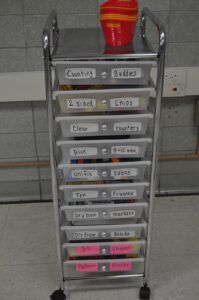 Setting up a Math Salad Bar is the key for being able to do concrete, pictorial, abstract thinking in your classroom. Once you’ve got structure, number talks, and games figured out, you’ll need manipulatives!
Setting up a Math Salad Bar is the key for being able to do concrete, pictorial, abstract thinking in your classroom. Once you’ve got structure, number talks, and games figured out, you’ll need manipulatives!
A Math Salad Bar is typically a cart, usually with 10 drawers on one side, 5 on the other, with “salad bowls” on top, and dry erase labels on the drawers so you can swap out what is in each drawer so you can have tools accessible. (Check out the Math Salad Bar Kit here for more information).
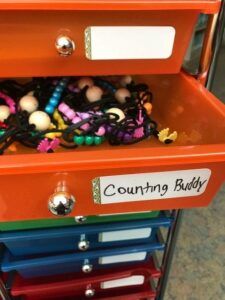 In some of our schools, there is a Math Salad Bar in every classroom, K-5th! Manipulatives are no longer looked at as toys, but actually an opportunity for meaningful interaction with things like place value discs or strips.
In some of our schools, there is a Math Salad Bar in every classroom, K-5th! Manipulatives are no longer looked at as toys, but actually an opportunity for meaningful interaction with things like place value discs or strips.
Not sure what to put in your salad bar? It’s a great idea to preview your unit, and think about what tools students would need to create a concrete or conceptual understanding of what they’re doing. Of course you have things like base-10 blocks and unifix cubes, which are readily available in classrooms, and we also have great lists of manipulatives, by grade level, available in kits through our store.
5. Vocabulary
The icing in the cake, the cherry on top of the well-thought-out math classroom is vocabulary. After you’ve considered structure, planned for number talks, prepped games and a stocked your Math Salad Bar, we want kids to be prepared to use appropriate vocabulary as they have conversations around math.
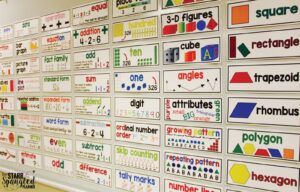 Consider: what is the key vocabulary in your first unit? What words do you want your students using? What vocabulary words will be on the assessment? What words are just more difficult or nuanced and require more practice (think “expression” vs “equation”)?
Consider: what is the key vocabulary in your first unit? What words do you want your students using? What vocabulary words will be on the assessment? What words are just more difficult or nuanced and require more practice (think “expression” vs “equation”)?

Certainly post your vocabulary words on a word wall, but I also think it’s great to interact with vocabulary by creating a foldable (click here for the blog)!
If you’re lacking vocabulary cards, check out this great link that will tell you the vocabulary words that go along with your standards and your grade.
Of course, I could add so many things to this list, but these are the top five things I would encourage you to start with! Get them going and working in your classroom, then start working on your lessons. We want to be able to create a culture in our classrooms where kids are excited to learn about math! Create a solid, but flexible structure in which you can incorporate games, add in number talks and concrete manipulatives, and make key vocabulary accessible to students.
With these five things in place, despite varying degrees of learning loss, you’ll have already set a course for success as you welcome students back into your classroom.
I hope that you have had, or will have, a great start to your 2021-2022 school year! As a teacher, you are truly a superhero in my eyes, especially considering all that you’ve gone through in the last 12 months. This is going to be a great year and you are ready to handle whatever comes at you!




